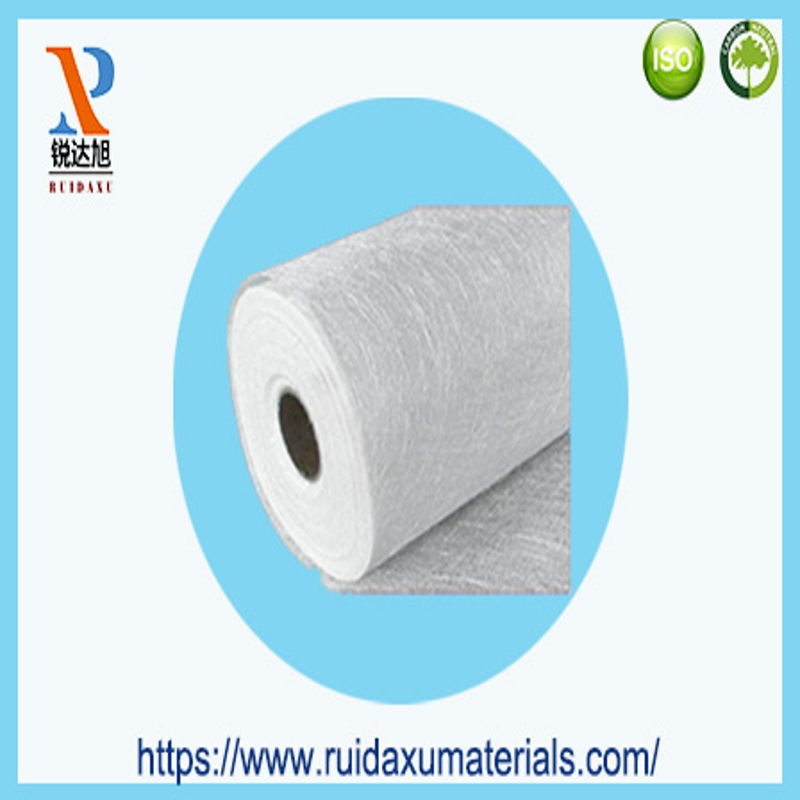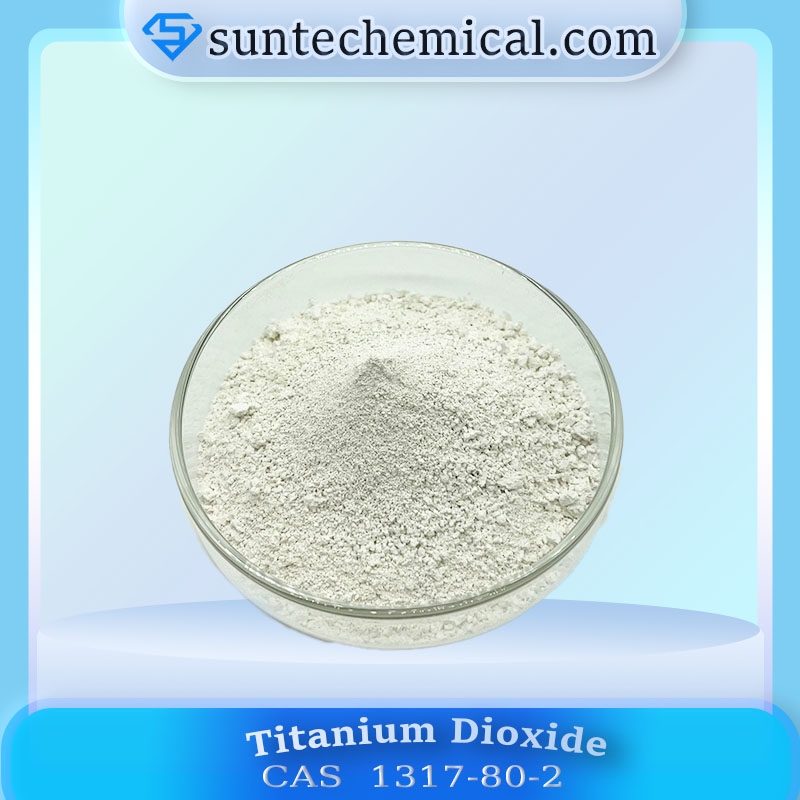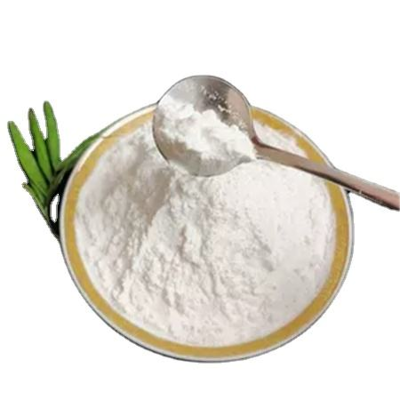-
Categories
-
Pharmaceutical Intermediates
-
Active Pharmaceutical Ingredients
-
Food Additives
- Industrial Coatings
- Agrochemicals
- Dyes and Pigments
- Surfactant
- Flavors and Fragrances
- Chemical Reagents
- Catalyst and Auxiliary
- Natural Products
- Inorganic Chemistry
-
Organic Chemistry
-
Biochemical Engineering
- Analytical Chemistry
-
Cosmetic Ingredient
- Water Treatment Chemical
-
Pharmaceutical Intermediates
Promotion
ECHEMI Mall
Wholesale
Weekly Price
Exhibition
News
-
Trade Service
Titanium dioxide is an inorganic white pigment whose main component is titanium dioxide.
Titanium dioxide, as a highly efficient light-scattering pigment, provides excellent whiteness and hiding power for the coating film.
In addition, the high energy consumption and unnecessary by-products caused by the titanium dioxide production process are also increasingly contrary to the current low-carbon footprint concept.
1 Production process
According to the different types of raw materials and process flow, the more mature titanium dioxide production process can be divided into two types: sulfuric acid method and chlorination method.
1.
The sulfuric acid process started in 1918 and was able to commercialize titanium dioxide in 1931.
The crystal form of titanium dioxide is mainly controlled by the crystallization and calcination process.
However, because the sulfuric acid process is dominated by batch operation, the process flow is longer.
1.
In the 1950s, DuPont used the chlorination method for the first commercial production to obtain rutile titanium dioxide.
In addition, the titanium dioxide used in the coating also needs to perform inorganic surface treatment on the titanium dioxide particles, usually aluminum oxide or silicon oxide.
Surface treatment acts as a barrier to prevent the generation of these free radicals.
However, the chlorination method has high requirements for raw materials, complex synthesis technology, and strong corrosive substances such as chlorine and hydrochloric acid also have a great test for the anti-corrosion performance of equipment.
Generally speaking, the production cost and technical requirements of the chlorination method are relatively high, but the produced titanium dioxide has higher purity, narrower particle size distribution and better performance.
2 The hiding effect of titanium dioxide in paint
The hiding power of the paint refers to the minimum amount of paint used to evenly coat the colored paint on the surface of the object so that the background color is no longer present.
The ratio or contrast ratio is used to characterize hiding power.
For white paint, light absorption is extremely weak, and the main contribution of covering comes from light scattering.
Scattering of light usually occurs at the interface of two substances with different refractive indices.
The coating film contains countless pigment particles.
At the interface between the pigment and the resin, light is scattered or bent due to the difference in refractive index, so that the light is completely reflected before reaching the substrate, resulting in an opaque coating film.
The refractive index of the resin is usually not much different, so the refractive index of the pigment particles determines the strength of the hiding power.
The greater the refractive index of the pigment particles, the stronger the hiding power of the coating film.
The refractive index of rutile titanium dioxide is higher than that of anatase, which is also one of the important reasons why rutile titanium dioxide is more widely used in the field of coatings.
The refractive index affects the propagation path of light in the coating film.
In coatings containing high-refractive-index pigments, the distance of light passing through is shorter.
Both coating films appear white and have good coverage.
However, when the thickness of the coating film is reduced to X, part of the light in the coating film containing low refractive index pigments will be absorbed by the substrate, resulting in a decrease in hiding power.
The coating film containing high refractive index pigments still maintains a good coverage.
Therefore, the film thickness also plays a key role in covering the coating film.
Coating manufacturers prefer to obtain the ideal coverage through the lower film thickness as much as possible, so as to reduce the cost.
The refractive index of titanium dioxide is higher than other white pigments, and the light scattering ability is strong.
Moreover, when the particle size of the titanium dioxide is about half the wavelength of the incident light, that is, the particle size is 0.
2-0.
3 µm, the optimal light scattering efficiency can be produced.
This is due to the diffraction phenomenon of incident light when it passes near the pigment particles, and its scattering cross-sectional area is equivalent to 4 to 5 times the actual geometric cross-sectional area of the particle.
As mentioned above, the particle size and refractive index of the scattering particles determine its light scattering efficiency, thereby affecting the hiding power of the coating film.
In addition, the closeness of the pigment particles also affects the light scattering efficiency to a certain extent.
When two titanium dioxide particles are close to each other, the light scattering ability of each other will be reduced.
This phenomenon is called agglomeration effect.
This means that in coatings, as the volume concentration of titanium dioxide increases, the scattering capacity per unit mass of titanium dioxide decreases.
With the increase of the titanium dioxide PVC, the hiding power will not increase all the time, and the change process can be divided into five areas AE.
In area A, the volume content of titanium dioxide in the formula is small, which is separated by effective space, and the light scattering efficiency is extremely high.
At this time, the hiding power increases with the increase of titanium dioxide content, which is approximately linear.
As the volume content of the titanium dioxide increases further, the titanium dioxide particles become closer together.
As shown in the area B, the slope of the curve is lower than that in the area A, which means that the agglomeration effect reduces the light scattering efficiency of the titanium dioxide particles per unit mass.
However, due to the increase of light scattering particles, which compensates for the lost light scattering effect, the total hiding power is still rising.
In the C region, the hiding power reaches the extreme value.
At this time, the titanium dioxide PVC is continuously increased, and the agglomeration effect becomes very obvious, which offsets the contribution of the increase of light scattering particles.
Therefore, the hiding power begins to decrease, and the critical volume concentration (CPVC) in the D region When the inflection point appears.
When the titanium dioxide PVC is continued to increase, there is not enough resin to wrap the pigment, resulting in voids inside the coating film after it dries.
The refractive index of air is about 1.
0, which is much smaller than the refractive index of the resin.
The difference in refractive index between the pigment and air becomes larger, resulting in stronger light scattering at the interface.
Therefore, in the E area, as the titanium dioxide PVC increases, the hiding power rises rapidly.
3 The sustainable development approach of titanium dioxide for coatings
As an indispensable white pigment in paint formulations, the demand for titanium dioxide is also increasing, and the resulting constraints on resources, energy consumption and environment have become more and more prominent.
It is urgent to improve the sustainable development capability of the titanium dioxide industry.
In addition to the need to promote the development of new titanium dioxide production processes and new technologies, coating manufacturers also need to actively explore how to improve the use efficiency of titanium dioxide, or seek new alternatives to reduce the amount of titanium dioxide used.
3.
1 Improve the use efficiency of titanium dioxide
In practical applications, the agglomeration or flocculation of titanium dioxide results in the failure to obtain ideal coverage even when the content of titanium dioxide is relatively high.
Therefore, improving the light scattering efficiency of titanium dioxide has become a hot topic of research.
Michael combined the Monte Carlo simulation method to explain that when the equal volume of fine filler is used in the coating formulation to replace the coarse filler, more space barriers will be obtained between the titanium dioxide particles, thereby effectively improving the hiding power of the coating film.
As the particle size of the filler decreases, the titanium dioxide pigment is better separated, and the light scattering efficiency of the titanium dioxide is improved.
This means that to obtain the same hiding power, the amount of titanium dioxide used will be reduced.
The space barrier of this kind of titanium dioxide is also known as the "pigment dilution" effect.
However, the diluted titanium dioxide particles also have the possibility of re-aggregation.
In 2013, Dow Chemical won the US Presidential Green Chemistry Challenge Award for successfully developing EVOQUE pre-composite polymer technology.
If the distance between ordinary coating titanium dioxide particles is too close, the light scattering area will overlap, which will reduce the efficiency.
The pre-composite polymer is fixed on the surface of the titanium dioxide particles in the coating to form an effective space barrier.
This improves the distribution of titanium dioxide particles in the coating and the light scattering efficiency, improves the covering power of the coating film, and can reduce the amount of titanium dioxide in the coating formulation by 20%, achieving the same or even better covering effect with less cost .
In addition, the addition of pre-polymerized compound also helps to improve the stain resistance and corrosion resistance of the coating.
The application of this technology can significantly reduce energy consumption.
According to the results of the third-party verified life cycle assessment (LCA), EVOQUE pre-composite polymer can reduce the carbon emissions of coating products by more than 22% and the water consumption by 30%.
In 1997, Virtanen proposed a titanium dioxide particle embedding technology, which uses titanium dioxide particles as the core and externally wrapped calcium carbonate as the shell to form a functional pigment with a core-shell structure as shown in Figure 8.
The calcium carbonate in the outer layer provides an effective space barrier between the titanium dioxide particles and improves the light scattering efficiency.
The carbon footprint is about 70% lower than that of ordinary titanium dioxide, and partial replacement of titanium dioxide can be achieved.
This pigment has been commercialized in FP pigments company.
Similarly, Kemu has developed a surface-treated titanium dioxide TS-6300.
Conventional surface treatment is often for reducing the photocatalytic activity of titanium dioxide and improving dispersibility.
The advanced processing technology in TS-6300 creates additional barrier space between titanium dioxide particles, reduces the agglomeration effect between titanium dioxide, and improves light scattering efficiency.
Moreover, this surface treatment increases the oil absorption of the titanium dioxide particles and reduces the level of CPVC, so that the presence of air in the coating film can be used to improve the light scattering efficiency in the case of lower PVC.
3.
2 Introducing air
The presence of air in the coating film can reduce the refractive index of the resin/air mixture, thereby increasing the refractive index difference with the titanium dioxide pigment, and improving the light scattering ability of the coating film.
In coatings, there are usually three types of voids that help to improve coverage, namely the air in the resin, the air in the filler particles, and the air at the interface between the resin and the pigment.
A typical example of improving the coverage of air in the resin is the hollow polymer microspheres first developed by Kowalski et al.
in 1984 and commercialized by Rohm and Haas Company under the name ROPAQUE.
The latex particles containing carboxylic acid groups are used to polymerize with hard monomers such as styrene to obtain latex particles wrapped in a polymer hard shell with a high glass transition temperature (Tg).
Then increase the temperature of the system to above the Tg of the shell layer, and then use alkali to neutralize and dissolve the carboxyl groups in the core to expand the core, and then cool down to set the shell shape and produce water-filled microspheres.
During the drying process of the coating film, the water evaporates through the polymer shell and is gradually replaced by air.
In order to compare the impact of hollow polymer on wet and dry coverage, tests have shown that coatings containing only titanium dioxide have a higher initial wet coverage, which gradually decreases with the increase of drying time until it reaches a stable state of dry coverage.
At the same time, the coatings containing titanium dioxide and hollow polymer have similar initial wet covering, and then the covering power gradually decreases during the drying process, and after reaching the lowest point, the covering power is gradually increased due to the volatilization of the moisture in the hollow polymer To a stable state.
When the content of titanium dioxide is reduced in the coating and the hollow polymer is used, the initial wet coverage is poor, but after the coating film is dried, the same dry coverage ability as the coating film containing only titanium dioxide can be obtained.
Therefore, hollow polymers can be used to partially replace titanium dioxide, and can be used as an effective space barrier like ultrafine fillers to improve the efficiency of titanium dioxide.
In addition, the hollow polymer can also improve the stain resistance, stain resistance, and scrub resistance of the coating film, as well as provide excellent outdoor color retention.
Similar to the hollow polymer, the air inside the filler also helps to cover the coating film.
The focused particle beam image at the cross section of the microporous kaolin particles produced by Omiya Company contains many micropores in the structure.
The kaolin containing closed micropores is prepared by a rapid calcination process.
In the traditional kaolin calcination process, natural hydrated aluminum silicate is slowly heated to 1000°C in 30 minutes, so that the flaky clay particles form irregularly shaped agglomerates.
The heating process of this calcined kaolin containing closed micropores only takes a few seconds.
The hydroxyl groups in natural aluminum silicate dissociate when the temperature reaches 500 °C and are released in the form of steam.
Because the heating speed is too fast and the steam is too late to release, the pressure inside the particles increases and expands, eventually forming a lot of micropores.
The void volume in the particles accounts for about 20%, which reduces the density of kaolin from 2.
60 to 2.
06.
The enclosed air in the microporous kaolin completely resists the penetration of resin, solvent or water in the liquid coating, so these voids help to improve the wet and dry coverage of the coating at the same time .
And when it is lower or higher than the paint CPVC, it can provide high hiding power to the coating film, and can save up to 20% of the use of titanium dioxide.
Among them, in the formula lower than CPVC, set the initial point as the volume content of titanium dioxide is 20%, and does not contain any other pigments and fillers, and then increase the three contrast substances with a gradient of 5% PVC, that is, PVC from 20% Gradually increase to 45%, and keep the volume content of titanium dioxide unchanged by replacing the resin with equal volume during the whole process.
It can be seen that the traditional calcined kaolin has very little effect on the hiding power of the coating film, because its refractive index is not much different from that of the resin.
The two substances containing closed pores, microporous kaolin and hollow polymer, greatly improve the hiding power of the coating film.
Although the two have similar contributions to the hiding power of the coating film, they have different effects on gloss.
Microporous kaolin has a matte effect due to the micro-rough structure of its surface, and the hollow polymer helps to improve the gloss of the coating film.
In the formula higher than CPVC, the starting point is 75% PVC, which contains 10% PVC titanium dioxide and 65% PVC calcium carbonate with an average particle size of 4 µm.
Then replace the calcium carbonate with a 5% PVC gradient, and keep the total PVC and volume solid content unchanged.
Above CPVC, microporous polymers are superior to hollow polymers and traditional calcined kaolin.
This is due to the simultaneous effect of the voids inside and outside the microporous kaolin particles.
And because the oil absorption of microporous kaolin is lower than that of traditional calcined kaolin, it will not adversely affect the scrubbing resistance.
In addition, Nguyen et al.
synthesized a composite nano-sandwich of polymer and titanium dioxide by free radical emulsion polymerization technology.
In this structure, the titanium dioxide particles are first embedded in a water-swellable hydrophilic inner layer polymer, and then coated with a hydrophobic outer layer, and finally the inner hydrophilic polymer layer is swelled in an alkaline solution.
, Forming a sandwich structure containing air and titanium dioxide particles.
This structure provides coverage in 3 ways :
One is titanium dioxide particles;
The second is air;
The third is the space barrier provided by the outer layer.
In summary, in the coating formulation, for different performance requirements, by reducing the agglomeration of titanium dioxide to increase its light scattering efficiency, or by introducing air to increase additional light scattering, both can make the coating film obtain better hiding power.
Realize the partial replacement of titanium dioxide, reduce carbon emissions, and improve the sustainable development ability of titanium dioxide.
4 Conclusion
With the increasingly serious problems of the ecological environment and the increase of people's awareness of environmental protection, the titanium dioxide industry with high pollution and high energy consumption is facing huge challenges and tests.
Titanium dioxide is a very important white pigment in coatings.
Improving its use efficiency, reducing its usage, and developing new materials to achieve partial replacement are necessary measures to achieve its sustainable development.







